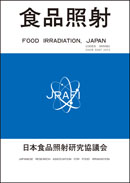Volume 40, Issue 1-2
Displaying 1-7 of 7 articles from this issue
- |<
- <
- 1
- >
- >|
-
2005 Volume 40 Issue 1-2 Pages 1-6
Published: September 30, 2005
Released on J-STAGE: June 28, 2010
Download PDF (655K) -
2005 Volume 40 Issue 1-2 Pages 7-10
Published: September 30, 2005
Released on J-STAGE: June 28, 2010
Download PDF (392K) -
2005 Volume 40 Issue 1-2 Pages 11-14
Published: September 30, 2005
Released on J-STAGE: June 28, 2010
Download PDF (397K) -
2005 Volume 40 Issue 1-2 Pages 15-18
Published: September 30, 2005
Released on J-STAGE: June 28, 2010
Download PDF (456K) -
2005 Volume 40 Issue 1-2 Pages 19-24
Published: September 30, 2005
Released on J-STAGE: June 28, 2010
Download PDF (659K) -
2005 Volume 40 Issue 1-2 Pages 25-47
Published: September 30, 2005
Released on J-STAGE: July 04, 2011
Download PDF (5222K) -
2005 Volume 40 Issue 1-2 Pages 49-58
Published: September 30, 2005
Released on J-STAGE: June 28, 2010
Download PDF (1236K)
- |<
- <
- 1
- >
- >|
